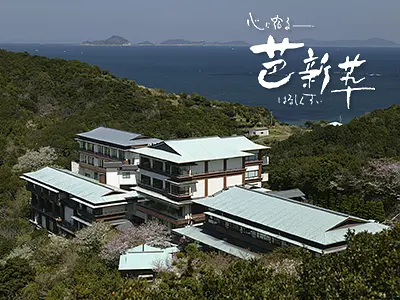目黒蓮さん主演!映画 『わたしの幸せな結婚』ロケ地巡り!! in三重
目黒蓮さんが主演の映画『わたしの幸せな結婚』が3月17日(金)より全国公開! 三重県では津市の高田本山専修寺と桑名市の六華苑がロケ地に選ばれ、撮影が行われました。 今回は映画の公開にあわせてロケ地巡りに行ってきたので、それぞれのロケ地の情報や見どころに加え、ロケ地マップの配布先も紹介します!普段は入ることができない映画で使用された場所も期間限定で公開されるお得情報もありますよ♪
記事作成:なちゃぽ
三重県公式PRアンバサダーのなちゃぽです。本職である看護師の傍ら、趣味のロードバイクで三重県の色んな場所へ行き、 Instagramで紹介しています。
▼目次
- 映画『わたしの幸せな結婚』
- 映画ロケ地マップをGETしよう!
- 高田本山専修寺(津市)
- 1.御影堂(みえいどう)(国宝)
- 2.大玄関(おおげんかん)(国指定重要文化財)
- 3.賜春館(ししゅんかん)(国指定重要文化財)
- 4.雲幽園(うんゆうえん)(県の名勝)
- 5.通天橋(つうてんきょう)(国指定重要文化財)
- 6.釘貫門(くぎぬきもん)(津市有形文化財)
- 7.山門(さんもん)(国指定重要文化財)
- 8.蓮心庵(れんしんあん)(国指定重要文化財)
- 専修寺まとめ・地図
- 六華苑(桑名市)
- 六華苑を設計したジョサイア・コンドル
- 1.旧高須御殿
- 2.離れ屋
- 3.一番蔵
- 4.和館 一の間・次の間
- 5.和館 廊下
- 6.洋館1階 食堂
- 7.洋館1階 ホール
- 8.洋館2階 書斎
- 9.庭園(国の名勝)
- 六華苑まとめ・地図
- 終わりに
映画『わたしの幸せな結婚』とは?
ここでは、映画の世界に浸りながら記事を読んでいただきたいため、映画の簡単なストーリーとキャスト・スタッフを紹介します。
ストーリー
『望んでしまった。少しでも長くこの人と居たいと―』
名家に生まれるも、継母や妹から使用人同然に扱われてきた美世はある日、政略結婚を命じられる。
その相手は、特殊な能力「異能」を持つ名家の当主で、冷酷無慈悲と噂の軍隊長・久堂清霞(きよか)。
帰る場所もなく、久堂家での生活を始める美世。
やがて清霞は美世と生活するうち、その心遣いに触れ次第に心を開いていく。
そんな時、帝都に【災い】が訪れる。そして美世にも魔の手が・・。
残酷な運命が二人を引き裂いていく―
キャスト&スタッフ
美しく冷酷無慈悲な主人公・久堂清霞を演じるのは、本作が映画単独初主演の目黒蓮さん(Snow Man)。名家に生まれるも継母や妹から使用人同然に扱われ、親の愛を知らずに育った斎森美世を演じるのは、女優・今田美桜さんです。
久堂清霞:目黒蓮(Snow Man)/斎森美世:今田美桜
斎森真一:高橋努/斎森香乃子:山口紗弥加/斎森香耶:髙石あかり/花:小林涼子
ゆり江:山本未來/辰石幸次:小越勇輝/辰石実:平山祐介/桂子:珠城りょう
帝:石橋蓮司/堯人:大西流星(なにわ男子)/枢木忠則:尾上右近 /五道佳斗:前田旺志郎
望月東弥:佐藤新(IMPACTors/ジャニーズ Jr.)/岡部秀太:西垣匠/宮田建祐:松島庄汰/澤村晋平:髙橋大翔
須藤嗣治:浜田学/賀茂村紀夫:津田健次郎/鶴木新:渡邊圭佑/鶴木義浪:火野正平
映画ロケ地マップをGETしよう!
まずは映画ロケ地マップをGETしたいと思います!
ここでは、配布場所や配布期間について紹介します。
ロケ地マップはどこでもらえる?
ロケ地となった六華苑・専修寺、津市・桑名市内の観光関連施設、東海エリアの映画館などで配布されています。また、関東・関西エリアでも配布されているところがあります。また、配布期間はロケ地マップが無くなり次第終了されるとのことです。
※原則、1人につき1部まで。また、各施設の営業時間や休業日は事前にご確認のうえ、お越しください。
津市
・津市役所 案内(1階ロビー)/広報課(3階)
・津駅前観光案内所 アスト津1階
・津市観光協会(津駅前 アスト津2階) 高田本山専修寺 茶所・蓮心庵
桑名市
・桑名市物産観光案内所(桑名駅前観光案内所)
・桑名市役所 観光課(2階)
・住吉浦休憩施設(六華苑前)
・宿場の茶店 一(桑名市川口町)
関東・関西エリア
・津市東京事務所(東京都千代田区平河町2-4-1 日本都市センター11階)
・三重テラス(東京都中央区日本橋室町2-4-1)
・三重県関西事務所(大阪府大阪市北区梅田1-11-4 大阪駅前第4ビル8階)
東海エリアの映画館
イオンシネマ津 イオンシネマ津南 イオンシネマ桑名 イオンシネマ東員
イオンシネマ鈴鹿 109シネマズ明和 109シネマズ四日市 ミッドランドスクエア シネマ
ミッドランドシネマ名古屋空港 イオンシネマワンダー イオンシネマ大高 イオンシネマ岡崎
イオンシネマ長久手 イオンシネマ各務原 109シネマズ名古屋 ユナイテッド・シネマ豊橋18
その他の配布先はこちらをご確認ください。
それでは早速、撮影地となった専修寺(津市)と六華苑(桑名市)へ行ってみましょう!
高田本山専修寺(津市)
最初は津市にある専修寺に行きたいと思います。
専修寺は、親鸞聖人(しんらんしょうにん)が開かれた、真宗高田派の本山寺院です。2017年に御影堂・如来堂が三重県の建造物として初めて国宝指定を受けました。
写真では分かりにくいと思うのですが、広さは東京ドーム2個分!
その中には、2棟の国宝と11棟の国指定重要文化財が立ち並びます。春には桜、夏には蓮の花が咲き誇ります。
ロケ地マップは専修寺の茶所「蓮心庵(上の境内図 8番)」で頂くことができます。
※尚、こちらの境内案内図はロケ地マップではありません。
どの順番から回ってもいいのですが、今回はロケ地マップと同じ順番で回って行きたいと思います。
1. 御影堂(みえいどう)(国宝)
御影堂と如来堂はいずれも高さが25mを超え、全国の国宝木造建築の中で5番目の巨大な堂です。
平成29(2017)年に三重県内で初めての国宝建造物に指定されました。
日光東照宮などを手がけた大工集団が6年がかりで完成させました。
御影堂では、親鸞聖人の木像(御影)をはじめ、歴代上人の画像(御影)を安置しているため、御影堂と名付けられているそうです。
写真左上の私が座っている場所(参拝する場所)を外陣、結界を越えたその前にある段が上がった場所を中陣、さらにその奥の煌びやかな場所を内陣と呼び、内陣は極楽浄土を表現しているそうです。そのため、内陣には極楽浄土で咲くとされている蓮が描かれていました。
蓮の花は、古くから「泥に出て泥に染まらない」と言われ、神聖な花として親しまれてきました。
また、蓮の育つ環境から、私たち人間の例えと言われているそうです。
「蓮は、泥の中でこそ咲く花です。この泥(欲や妬みのある世界)の中で私たちが生きていることを自覚しつつ生き抜いたら、極楽浄土で綺麗な花を咲かせることができるのです。」ということを専修寺職員の僧侶さんに教えていただきました。
<映画での見どころポイント>
お堂内に帝の御寝所として御帳台が設営され、清霞や堯人、側近の謁見シーンの撮影が行われました。
内陣の黄金の扉は、撮影時閉めていたそうです。また、昼間は参拝客がいるため、夜中を通して朝方まで撮影されました。
御影堂西角からは、春だと右手側に桜を望むことができます。
<映画での見どころポイント>
ここからは、新(鶴木家の御曹司)が鳥形の式を飛ばします。
2.大玄関(おおげんかん)(国指定重要文化財)
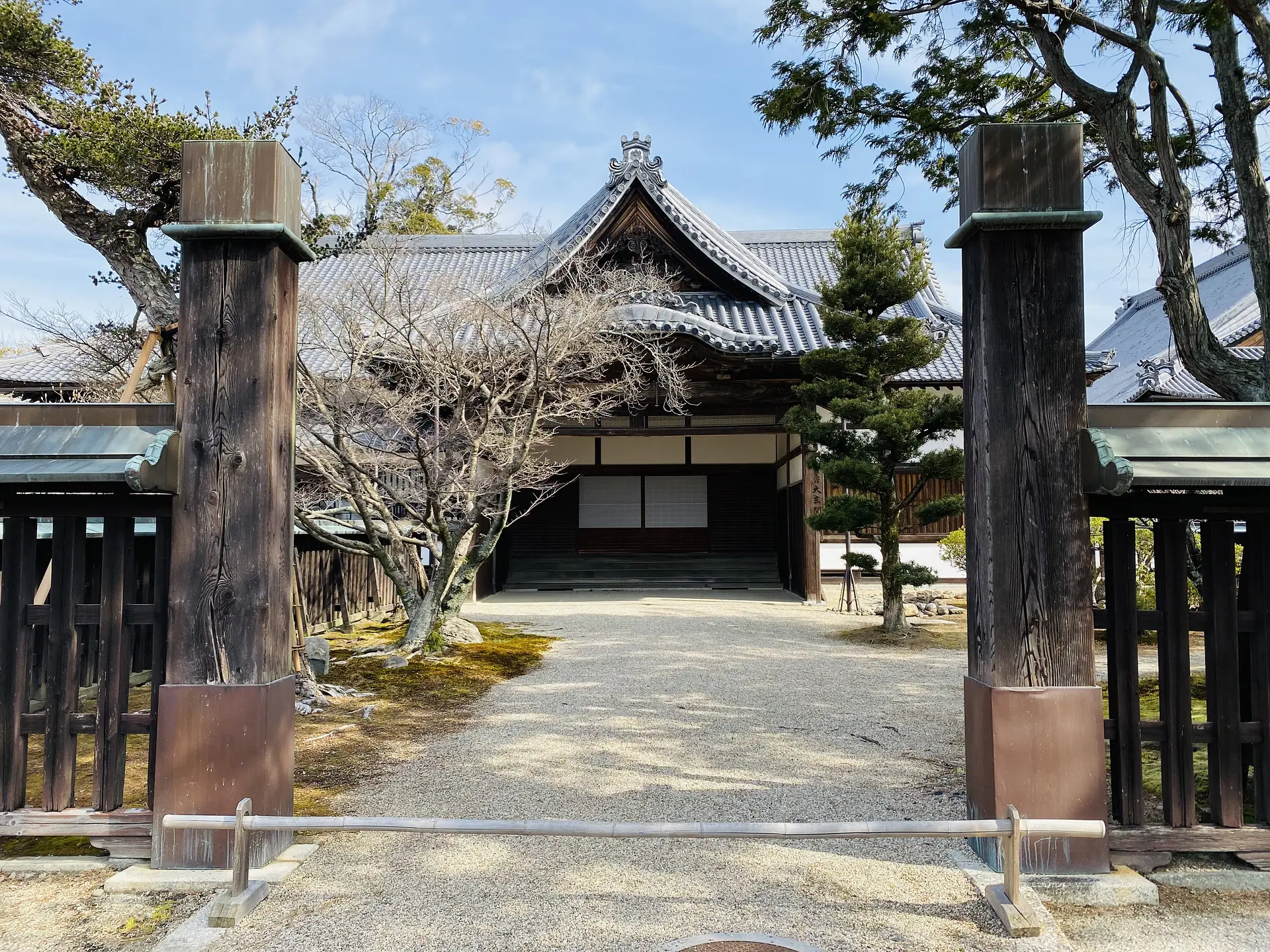
大玄関は専修寺の正式な玄関で、皇室の方などを迎える際に使用され、通常は一般公開されていません。
<映画での見どころポイント>
大玄関前には、宮内省の入口として、宮内省の看板と掟(規制)が掲げられました。
3.賜春館(ししゅんかん)(国指定重要文化財)
賜春館は、一般公開されていない重要文化財で、貴賓接待のための書院です。
明治天皇行幸の行在所(天皇がお出ましの時の仮の御殿)にされることが通知され、それを祝って「賜春館」と命名されました。
<映画での見どころポイント>
清霞が蟲(むし)の件を上官に報告する場面で使われ、恋敵となる新との初対面を果たしました。
4.雲幽園(うんゆうえん)(県の名勝)
両御堂の背面に接しているこの庭園は、「雲幽園」と呼ばれ、県の名勝にも指定されています。
池の周囲を歩くことができる回遊式庭園で、自然美がそのまま生かされています。
入り口の橋を渡ると、とても美しい竹林の道が続いています。
そのまま進むと茅葺の門があるのですが、門を通った後に一度振り返ってみてください。門の中から見える竹林がより美しく見ることができるポイントだと思います。
門から先に進むと、大きな短冊型の延べ石二枚が橋になっています。この橋を支える柱も石になっているため、少しドキドキしながら渡りました。さらに奥へと進むと、お茶室の「安楽庵」が見えてきます。
映画では安楽庵は使用されていませんが、見学することもできるのであわせてご覧になってはいかがでしょうか?(要事前予約)
<映画の見どころポイント>
幼馴染の清霞と堯人が、安楽庵付近の竹林を歩きながら語らったシーンが撮影されました。
5.通天橋(つうてんきょう)(国指定重要文化財)
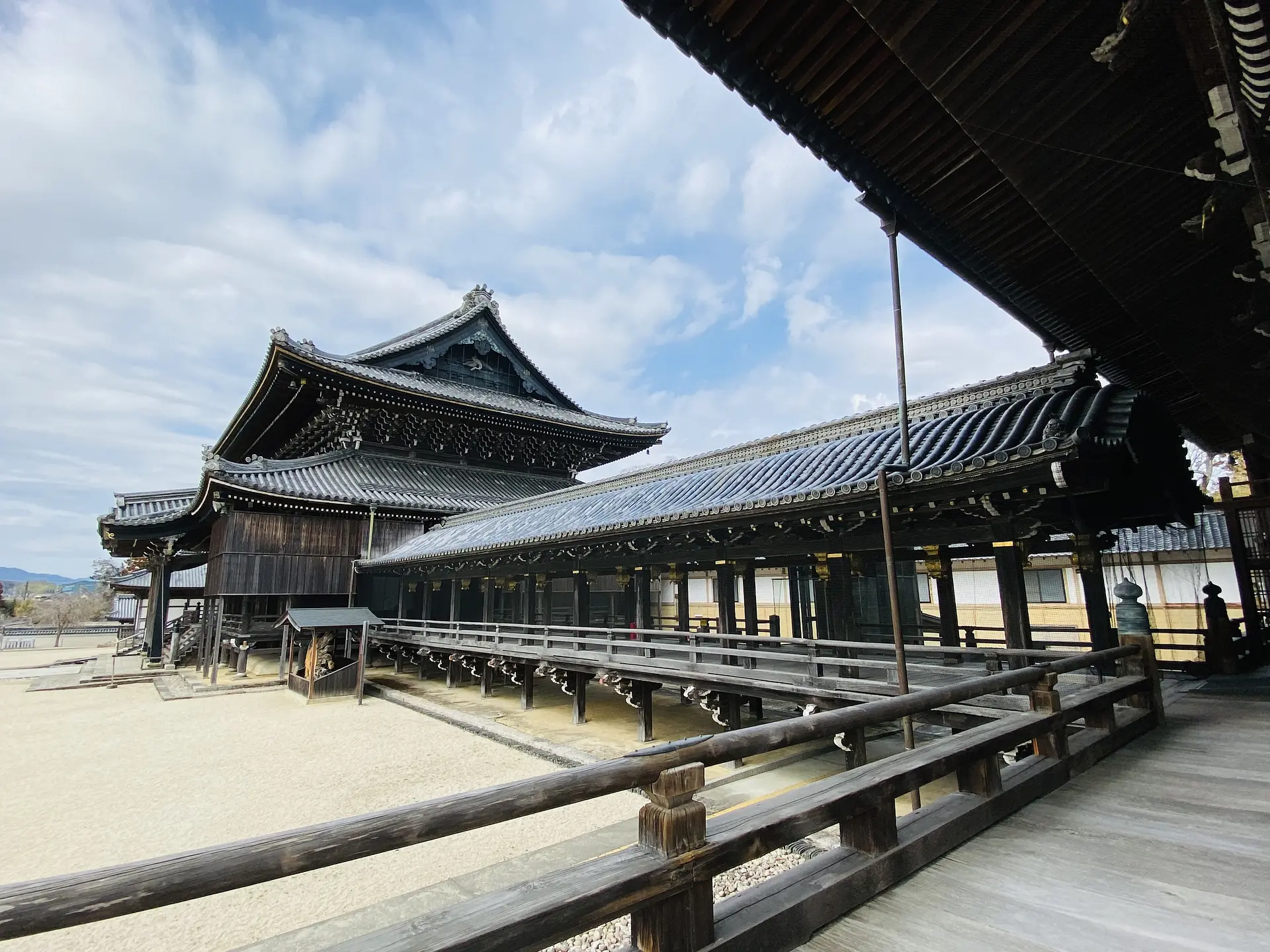
国宝である如来堂と御影堂を繋ぐ廊下で、重要文化財に指定されています。
お七夜といわれる1月9日〜16日のみ、灯籠がライトアップされるそうです。
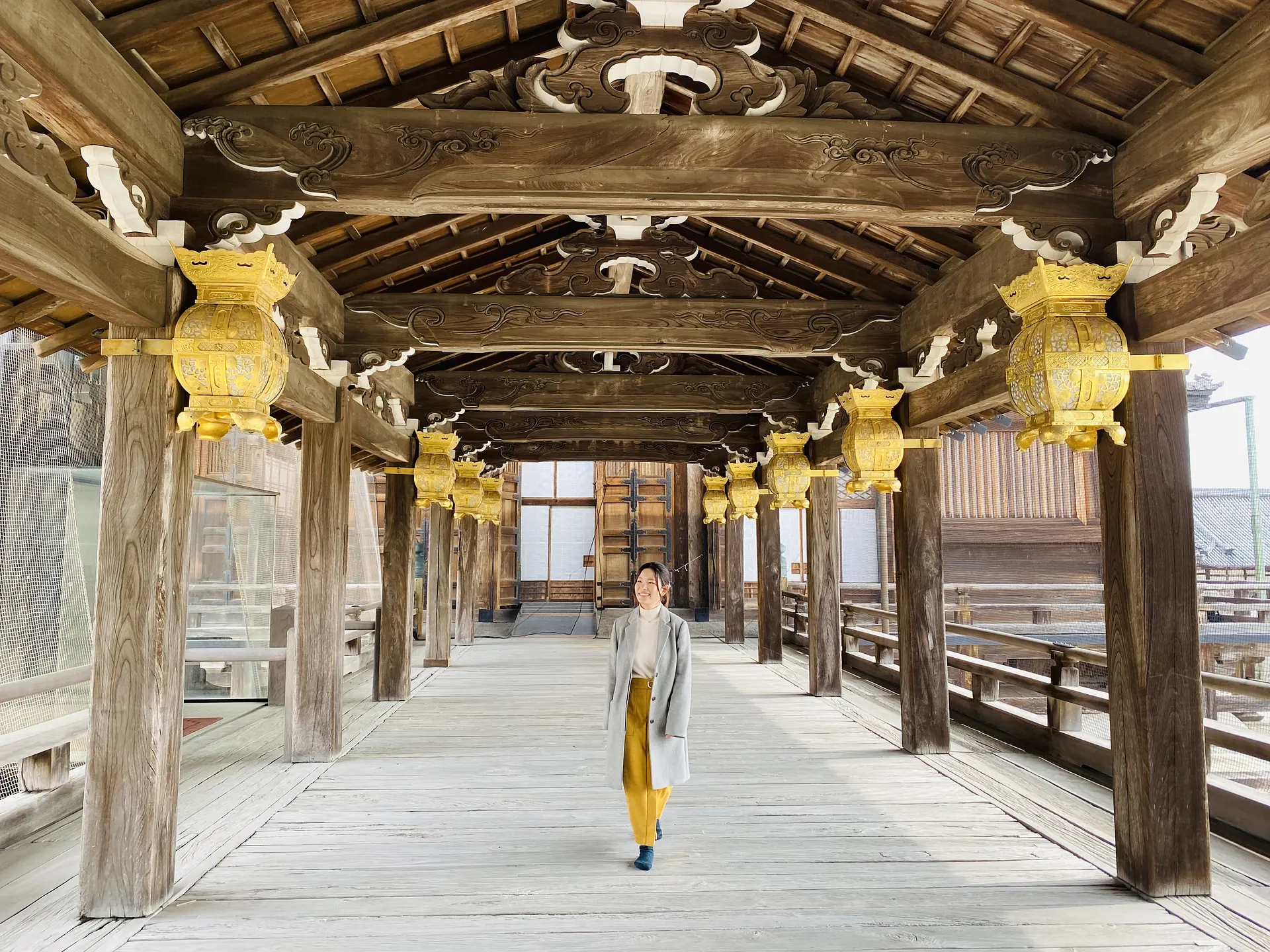
<映画での見どころポイント>
正装した堯人(次代の帝位を継ぐ皇子)が、侍従たちが並ぶなか、厳かに歩くシーンが撮影されました。
6.釘貫門(くぎぬきもん)(津市有形文化財)
釘貫門は、専修寺の境内と門前町を分けるために設けられた門です。
石橋を越え釘貫門を渡ることで、仏が安置される神聖な空間と世俗空間とを別ける精神的な結界のような役割を持っていたと推定されています。
専修寺釘貫門は、江戸時代当時の形式を現在に伝える貴重なものとして、平成15年に津市有形文化財に指定されました。
<映画での見どころポイント>
陸軍特殊部隊の隊員が男に襲われるシーンが撮影されました。
夜間の撮影では、大型扇風機を用いて木の葉を飛ばし、不気味な雰囲気を演出したそうです。
7.山門(さんもん)(国指定重要文化財)

御影堂の正面にあり、専修寺の総門にあたります。
2階建てで、間口20m、奥行き9m、高さ15.5mの大きな門です。
御影堂から山門を向いて撮影したものです。
<映画での見どころポイント>
感動的なクライマックスのシーンが撮影されました。
また、傘を手に持って待つ美世に走り寄る、清霞の姿が撮影されました。
8.蓮心庵(れんしんあん)(国指定重要文化財)
蓮心庵は映画のシーンで登場しませんが、重要文化財の茶所を使用した寺カフェです。
この蓮心庵が今、大注目を集めているそうです!
というのも、主演の目黒蓮さんのお名前に「蓮」という字が入っているため、この看板が新たな写真スポットになっているんです!
また、店内には蓮の落雁(らくがん)があるのですが、こちらもお土産として購入される方が多く、大人気!
私が訪れた時には、蓮の花のピンクの落雁はすでに売り切れでした。桜がモチーフの映画ということもあり、桜の落雁も人気だと聞きました。
かぶせ茶を頂いたのですが、飲み終わった後にポン酢をかけ、お茶の葉を食べることができます。
普通の茶葉よりも柔らかく、まるでおひたしのように食べることができました!
専修寺まとめ・地図

前半の専修寺は以上になります!滞在時間は全部ゆっくり周ると、写真を撮る時間も含めて約2時間でした。
他の参拝客もいるので、マナーを守りつつ皆さんも楽しんできてください!
<アクセス>
【車】
「津IC」から約15分(駐車場あり)
【電車】
JR「一身田駅」から徒歩約5分
近鉄「高田本山駅」から徒歩約20分
伊勢鉄道「東一身田駅」から徒歩約15分
【バス】
三重交通「本山前」下車すぐ
六華苑(桑名市)
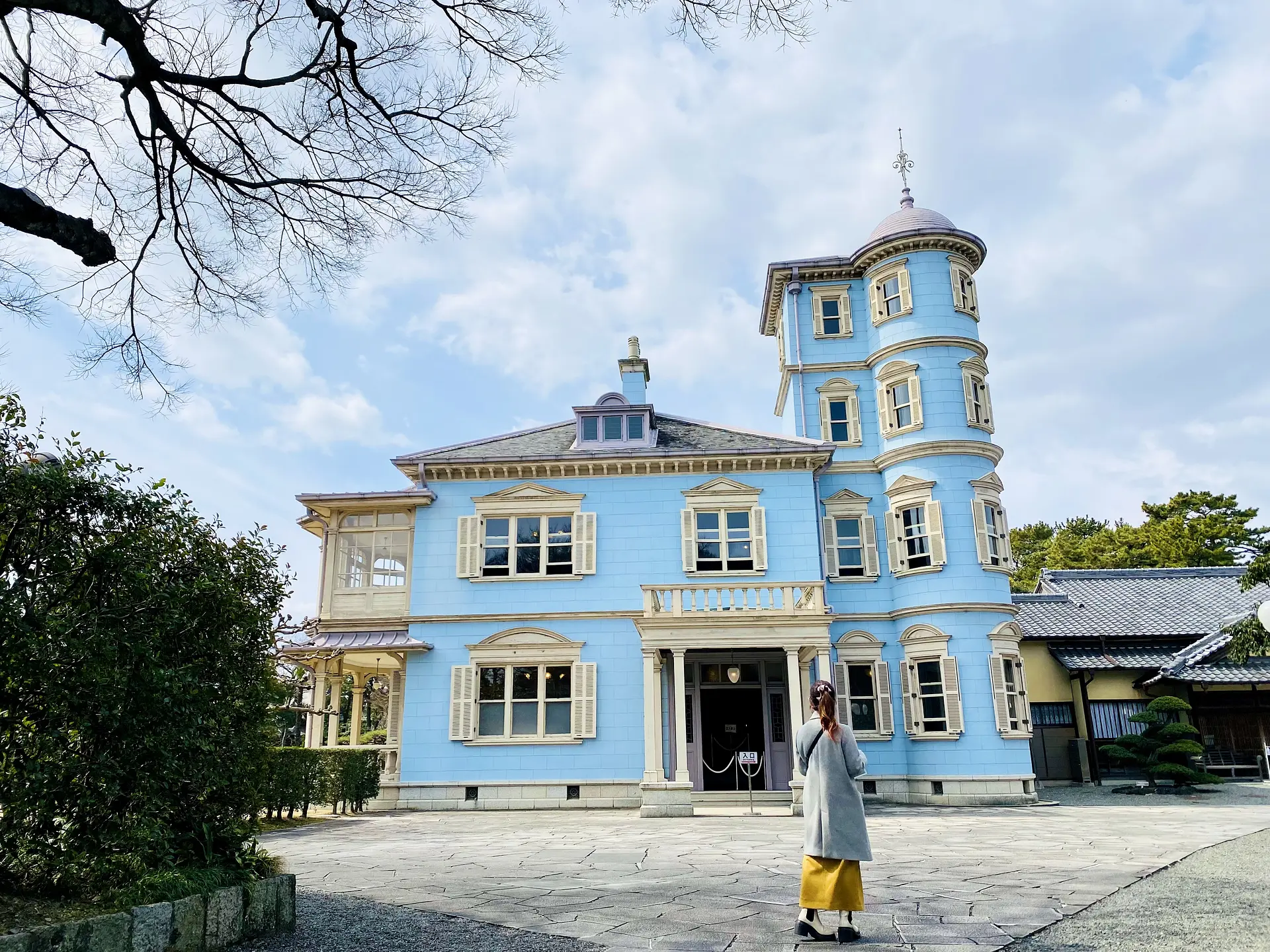
続いて、場所を桑名市の六華苑へと移したいと思います!
六華苑(旧諸戸清六邸)は、山林王として知られた桑名の実業家である二代諸戸清六の新居として建設されました。
広大の敷地内には洋館と和館などの建造物があり、大正2(1913)年に竣工され、そのときの姿がほぼそのまま残されています。
洋館と和館は離れているのではなく、連続して繋がれているのがとても印象的でした!
また、洋館には洋服を着たお手伝いさん、和館には和装のお手伝いさんがいたそうです。
ロケ地マップは玄関横の事務所で頂くことができます。
※尚、こちらの境内案内図はロケ地マップではありません。
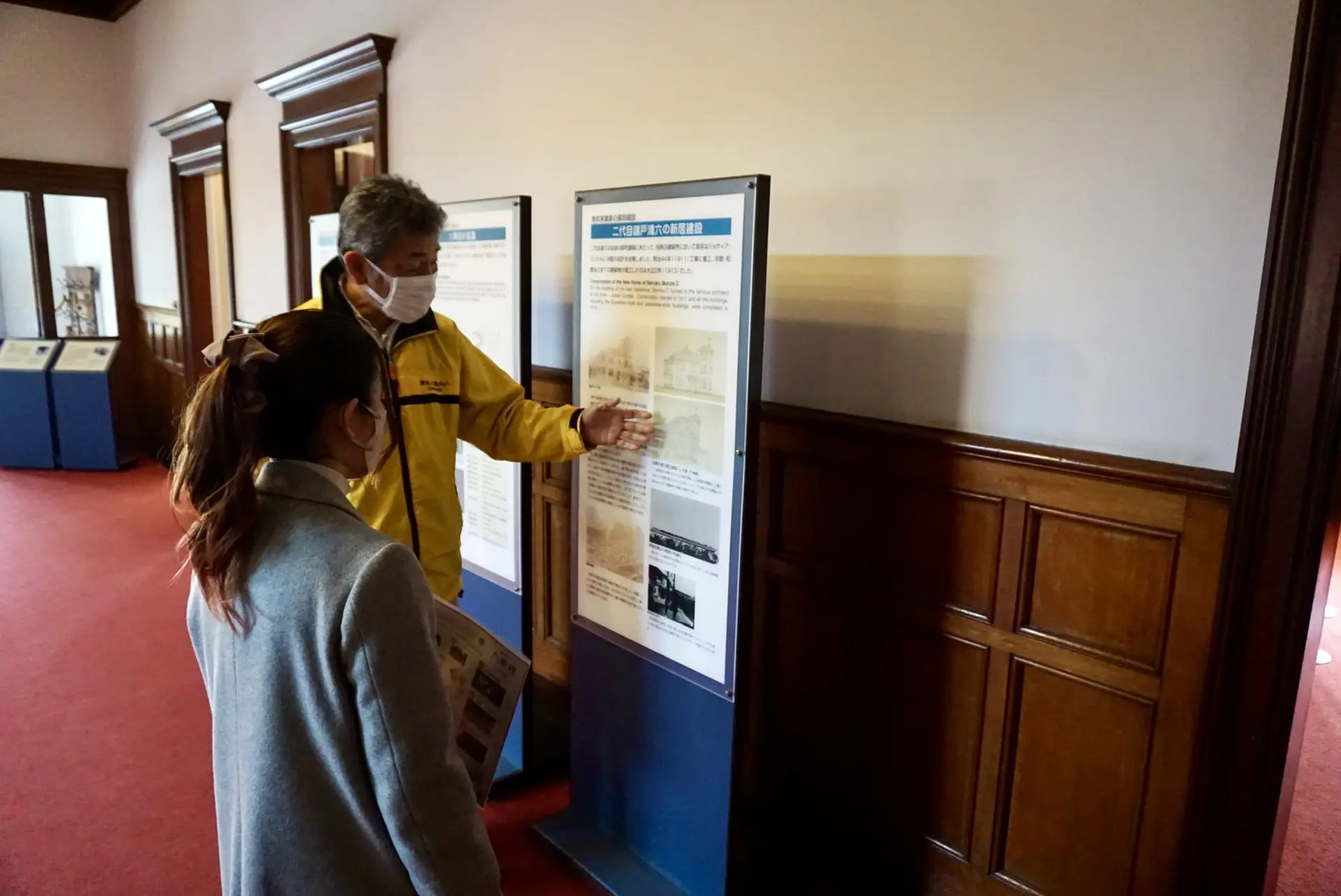
六華苑には、無料でガイドを行なってくださるボランティアの方がいらっしゃるとのことで、ガイドをお願いしました。
とても知識が豊富で、時代背景や建築様式など様々な視点から沢山のことを教えていただきました。
六華苑を設計したジョサイア・コンドル
二代諸戸清六は、自身の邸宅を建築するにあたり、当時の建築界において高名なイギリス人建築家ジョサイア・コンドルに洋館の設計を依頼しました。
コンドルは明治10(1877)年に近代的な西洋建築の技術を伝えるために、政府のお雇い外国人として来日。東京大学の教授として、日本で初めて建築教育に携わった他、鹿鳴館や岩崎久彌邸などの建物を設計しています。
しかし、コンドル設計の建築物の多くは関東大震災や太平洋戦争で失われてしまい、六華苑は関東以外に唯一現存する数少ない貴重な作品です。洋館と和館は国の重要文化財に、庭園は国の名勝に指定されています。
1.旧高須御殿
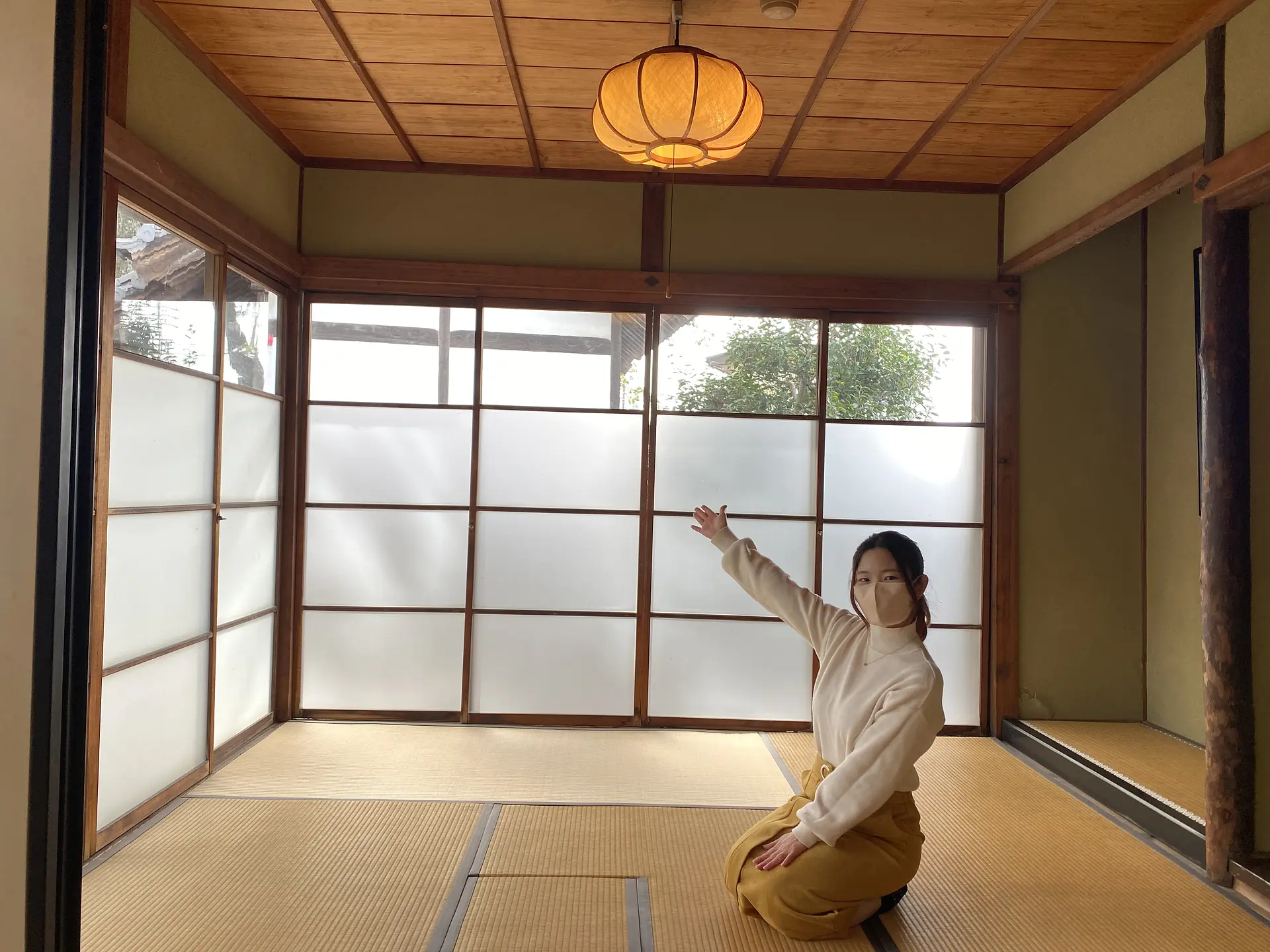
こちらは和館の「旧高須御殿」です。
岐阜県海津町にあった高須藩の御殿の一部を移築したと伝えられています。
旧高須御殿は旧高須藩陣屋の数少ない遺構の一つとして貴重なことから、三重県指定文化財に指定されています。
<映画での見どころポイント>
嫁入り前の美世の部屋が撮影されました。畳や障子を外し、冷遇されている雰囲気を出したそうです。
2.離れ屋
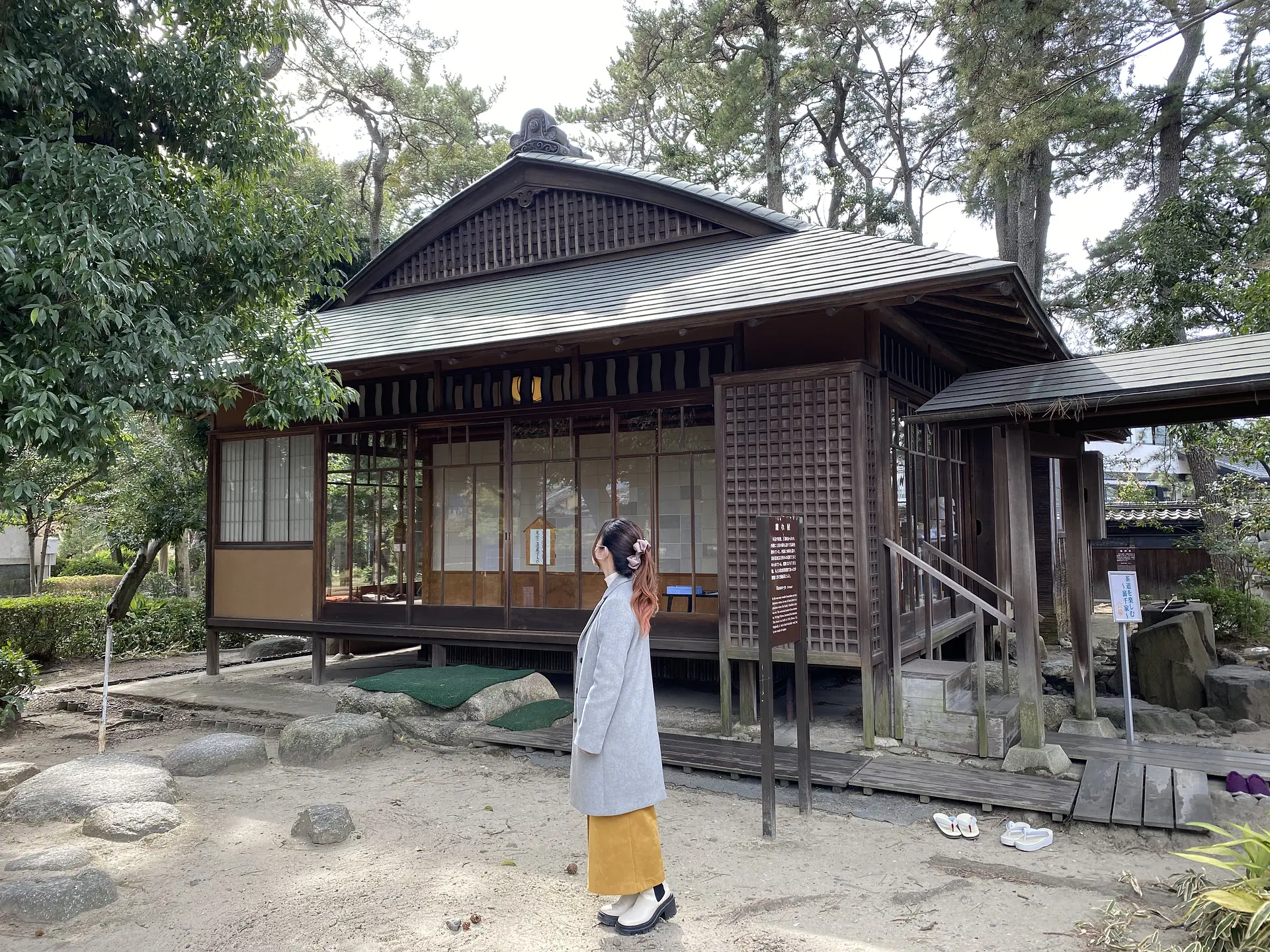
杉の木が沢山使われた建物で、昭和13(1938)年に建てられた当時は仏間として利用されていました。
現在はお茶室として使用されています。
<映画での見どころポイント>
縁側では幼い頃の美世と花、母・澄美との思い出のシーンが撮影されました。
3.一番蔵
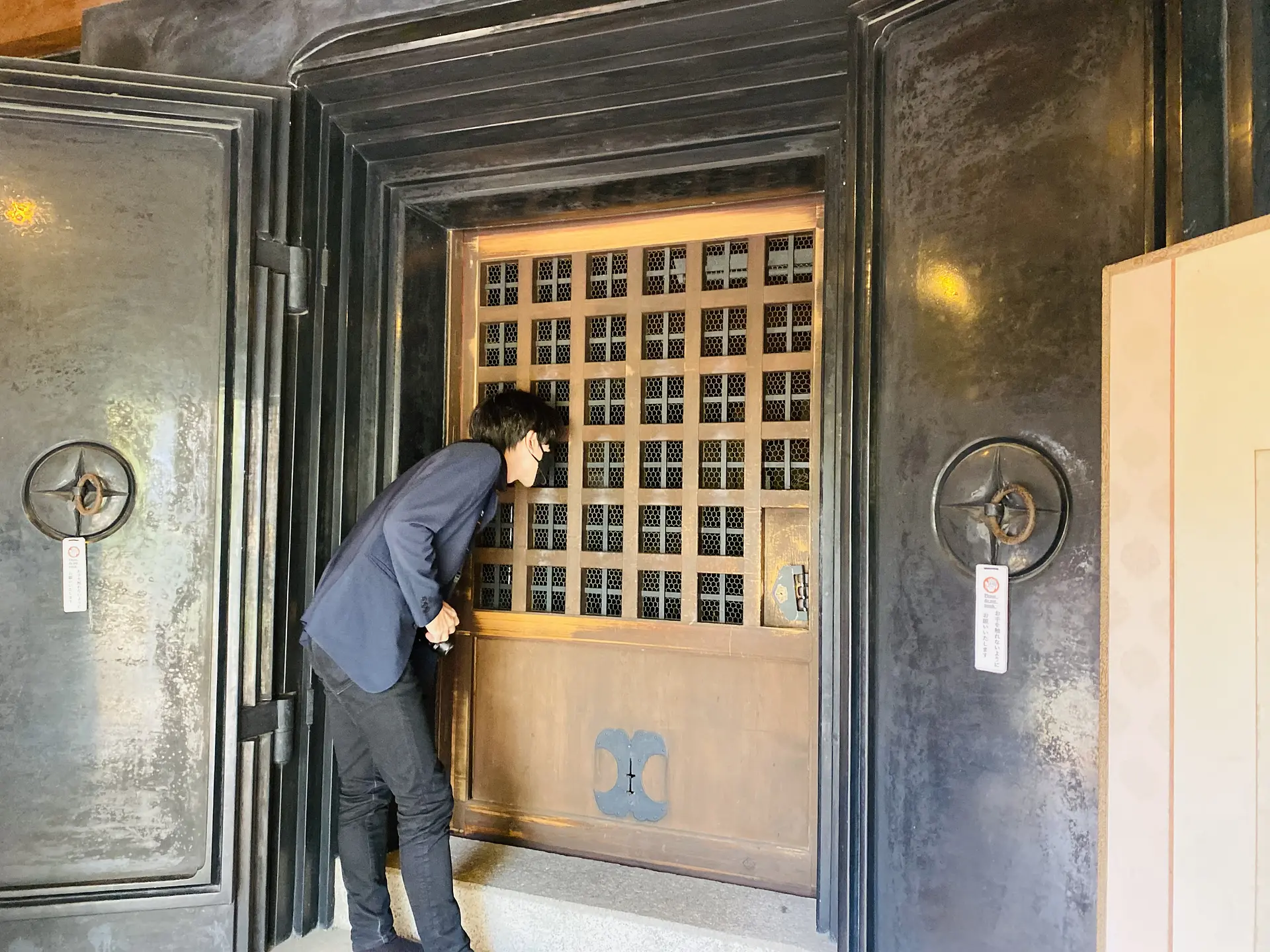
黒漆喰の扉がついた諸戸家の一番蔵です。
扉はとても重厚感があり、中を覗くと暗く冷たい風を感じました。
<映画での見どころポイント>
美世が閉じ込められたシーンが撮影されました。
4.和館 一の間・次の間
来客用のお座敷として使用されていました。
松の一枚板や、屋久杉も使われており、豪華な造りをしています。
また、鴨居(障子や襖窓引き戸の上枠)には、菊と桐の花をモチーフにした釘隠しがあります。
天皇家系は菊の花が16枚ですが、諸戸さんの功績が認められたことや高貴な方をお迎えする上での配慮から、花弁が15枚の紋を使用しています。
<映画での見どころポイント>
斎森家当主の部屋として使用されました。
激しいアクションの撮影があったため、全ての障子が入れ替えられたそうです。
一の間からは日本庭園をよく見ることができます。
とても落ち着いた雰囲気の部屋なので、ここでアクションシーンの撮影がされたことに驚きを感じます。
5.和館 廊下
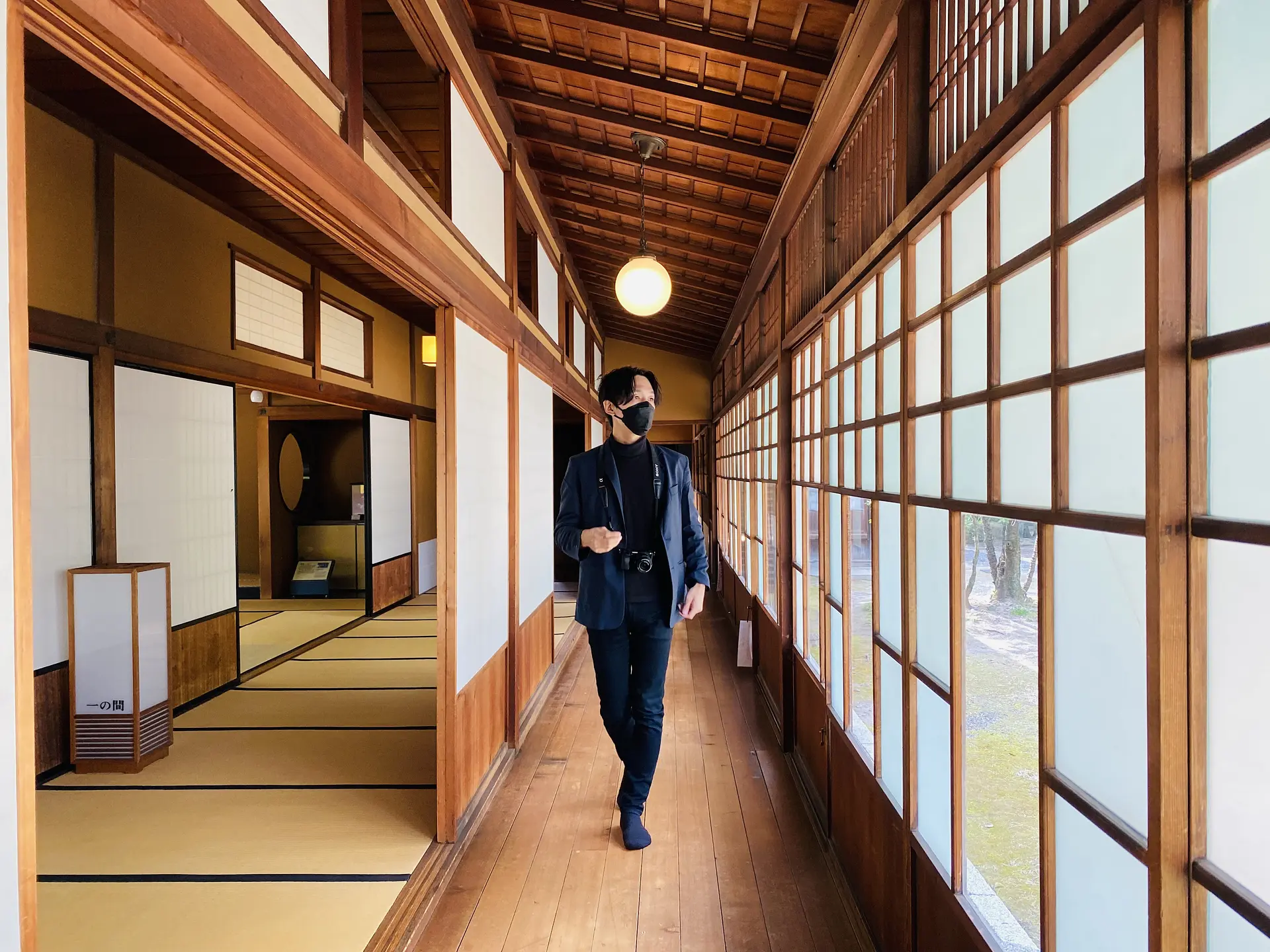
和館の廊下は、29畳分の「畳廊下」と「板廊下」の2つが並列しているのが特徴的です。
これは、ご主人とお客さんが座敷廊下、お手伝いさんは板廊下と分けて使用していたからとのことでした。
<映画での見どころポイント>
座敷廊下では、炎に包まれながら清霞が美世を救出するシーンが撮影されました。
6.洋館1階 食堂
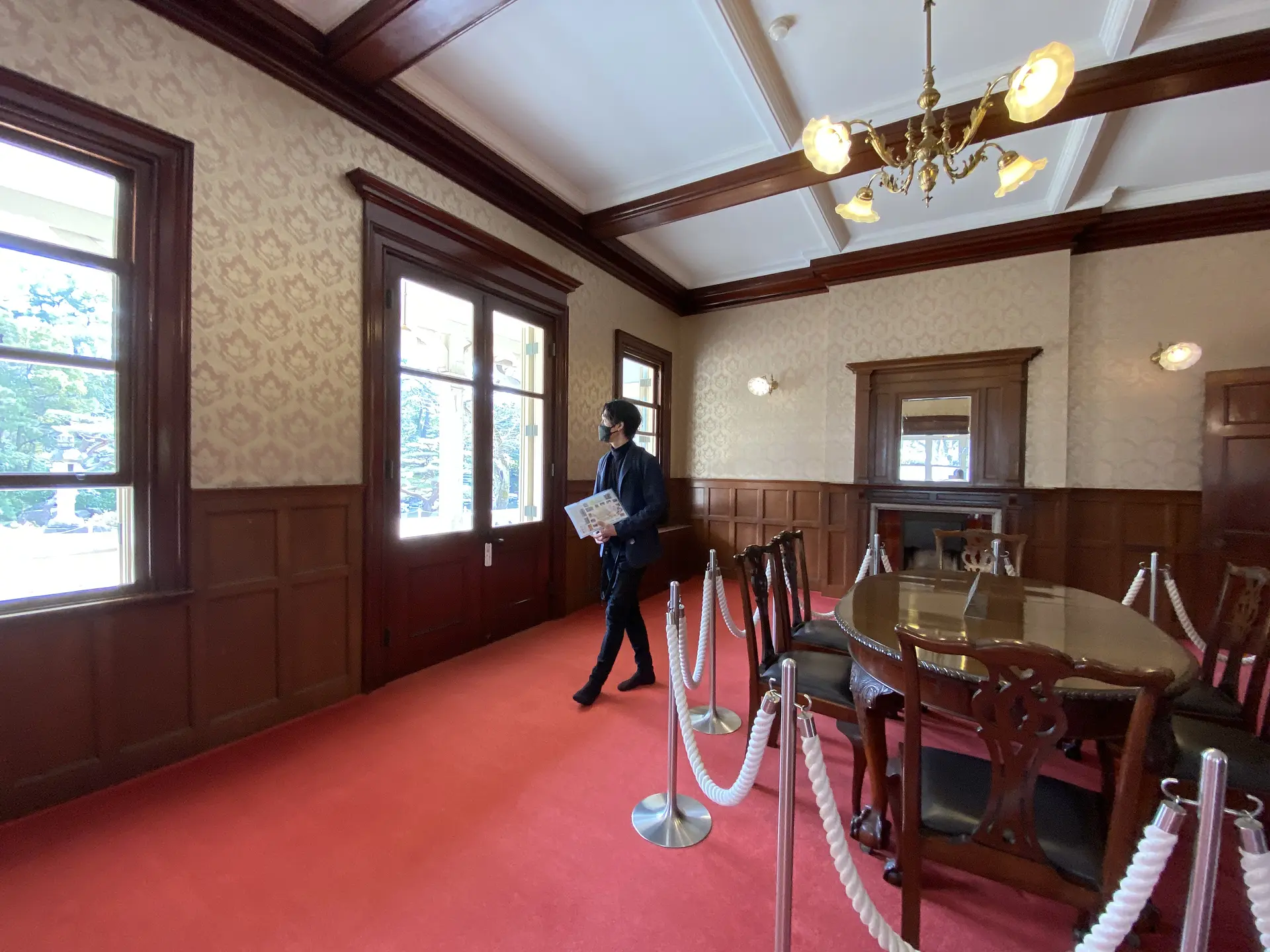
ここは和館の隣に位置する、洋館1階の食堂です。
先程までいた和館とは雰囲気がガラッと変わり、不思議な感覚になりました。
<映画での見どころポイント>
ドレスやアクセサリーなど、女の子の夢がいっぱい詰まった美世の妹・香耶の部屋が撮影されました。
7.洋館1階 ホール
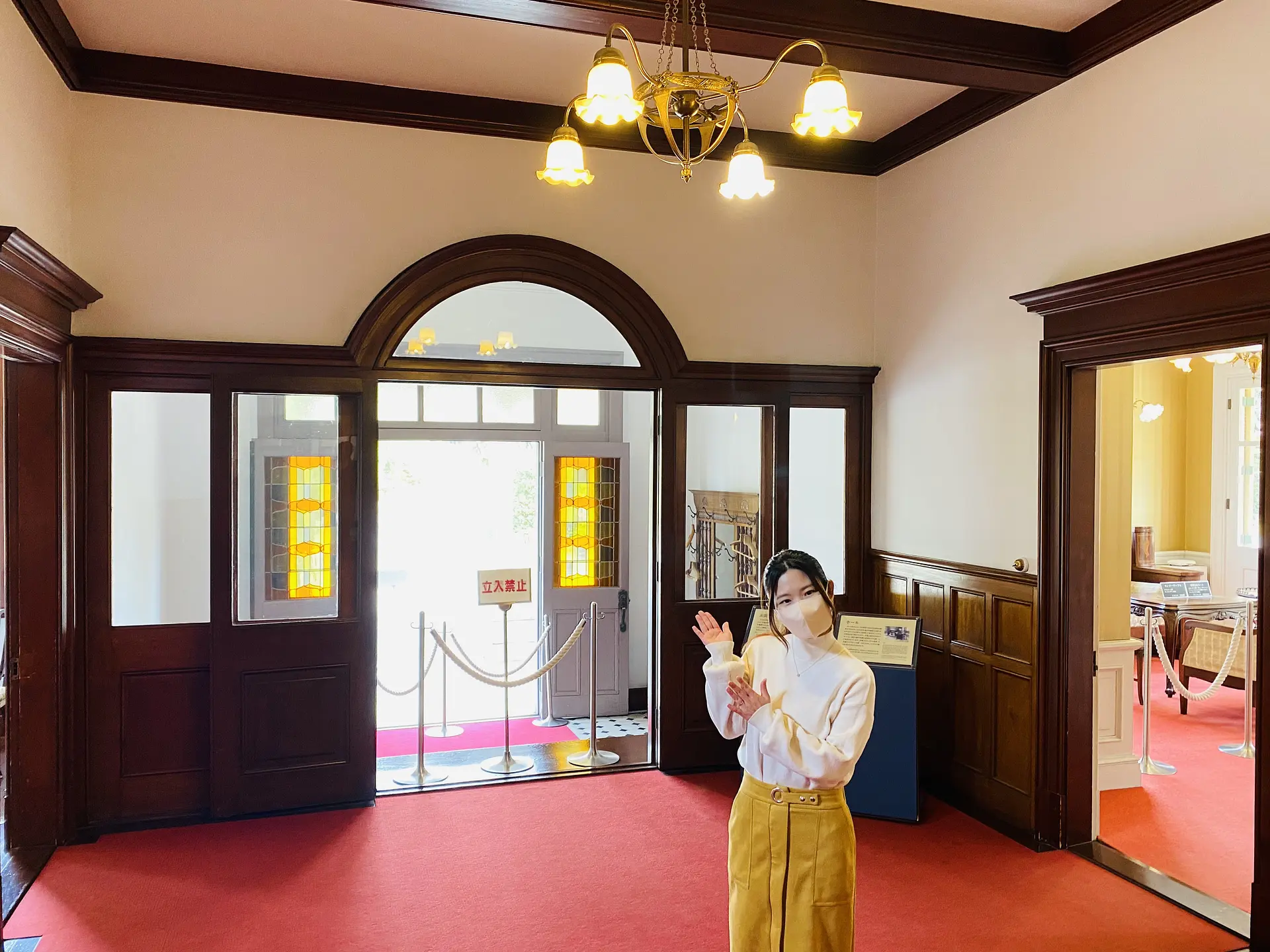
外扉はステンドグラスになっています。
また、洋式の水栓トイレがあり、今から110年前の竣工当時から水洗だったとのことで、驚きです!
トイレの床には玄関と同じ輸入タイルが使用されているのですが、これは鹿鳴館で使用されているタイルと同じとのことでした。
<映画での見どことポイント>
斎森家の玄関として使われました。予告編にもあった、アクションシーンの撮影も行われています。
8.洋館2階 書斎
洋館2階には、サンルームから光が差し込む書斎と居間があります。
このサンルームからは庭を一望することができます。
<映画での見どころポイント>
この書斎は映画内では食堂に変わり、斎森家が食事をするシーンが撮影されました。
シーン毎にテーブルコーディネートも変えられたそうです。
9.庭園(国の名勝)
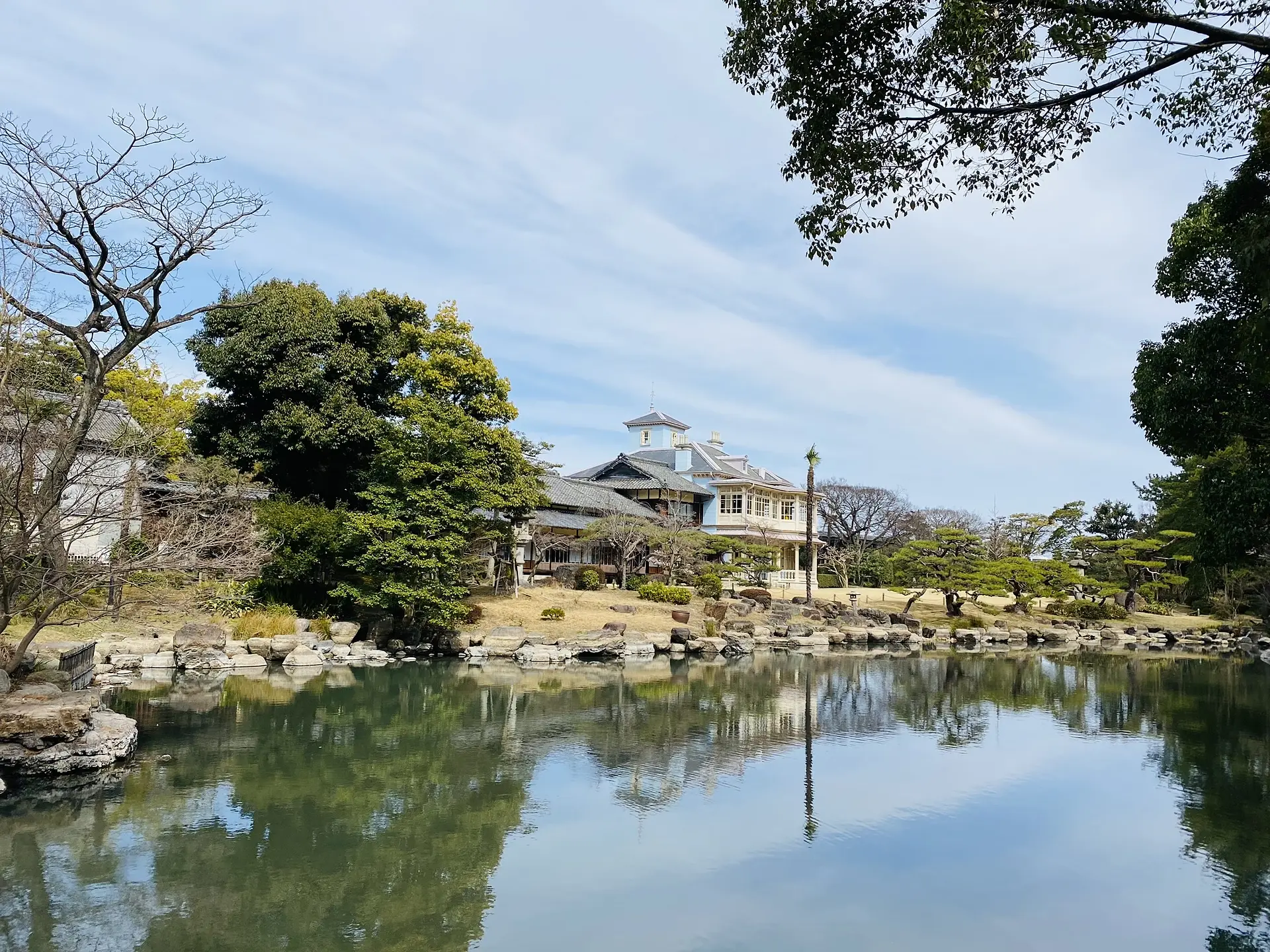
この庭園は、平成13(2001)年に国の名勝に指定されました。
揖斐川と池が連携しているため、川の干満の変化に合わせて池の水位が変わることを楽しんでいたそうです。
また、庭園の隅の方に小高い丘があり、その中が防空壕となっていました。
戦時中、池の中に爆弾が落ち玄関が破損したそうですが、建物の大部分は奇跡的に戦火から免れたそうです。
※防空壕内部の見学はできません。

また、和館の前では梅が綺麗に咲いていました。(3月上旬時点)
<映画での見どころポイント>
物語の重要なキーアイテム、桜の切り株が庭に置かれました。撮影後は桜の花びらでいっぱいだったそうです。
六華苑まとめ・地図
映画内では、六華苑は斎森家の屋敷として登場しますが、ロケ地巡りを通じて六華苑当主の諸戸家を知ることができ、より楽しむことができました。
六華苑は訪れる前からSNSを通じて知っていたのですが、どこを切り取っても美しく、写真を撮るのがとても楽しかったです。また洋館と和館で趣が全く異なるため、別の時代や国を行き来しているような感覚でした。
季節によって庭園の雰囲気も異なると思うので、また季節を変えて訪れてみたいです!
【開苑時間】午前9時〜午後5時(ただし、入苑は午後4時まで)
【休苑日】 月曜日 ※月曜が祝日の場合、翌平日
年末年始(12月29日〜1月3日)
【入苑料】 一般(高校生以上) 460円(団体料金390円)
中学生 150円(団体料金70円)
※団体料金:20名以上
※小学生以下は無料(ただし、付き添いが必要)
※障害者手帳をお持ちの方は、窓口でご提示ください。(アプリでのご提示も可)
ご本人様及び、付き添いの方3名まで入苑無料となります。
<アクセス>
【車】
「長島IC」「湾岸桑名IC」「桑名IC」からそれぞれ約15分
【電車】
JR/近鉄「桑名駅」から徒歩約20分
【バス】
三重交通「田町」から徒歩約10分
また、専修寺から六華苑までは車で約1時間(有料道路利用)でした。
終わりに
最後まで読んでいただき、ありがとうございました。
【映画『わたしの幸せな結婚』ロケ地巡り!! in三重】の記事はいかがでしたでしょうか?
映画の世界観に触れながら、ロケ地本来の歴史も同時に学ぶことができ、とても楽しかったです!
ぜひ皆さんも訪れてみてください!
今回載せきれなかった写真はInstagram(@natyapo2)にて投稿していきたいと思います!
また、映画『わたしの幸せな結婚』×三重県の特設サイトでもロケ地紹介やイベント情報の他、ロケ地周辺の観光スポット・グルメなどの情報も掲載していますので、こちらもぜひご覧ください!
関連スポット
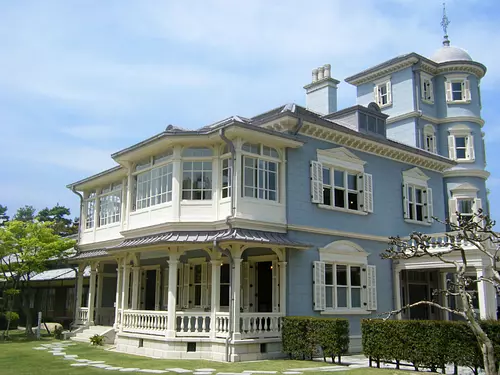
六華苑
北勢
桑名市大正2年に完成した六華苑には、鹿鳴館を設計したイギリス人建築家ジョサイア・コンドルによる4層の塔屋を持つ洋館と、和風建築およびその前庭の池泉回遊式庭園などがあり、明治・大正期を代表する貴重な建造物として国の重要文化財に指定されています。 また、庭園は一部を除き国の名勝に指定されています。 近隣には洋館を眺めながら食事できるレストランがあります。 ※小学生以下は付き添いを要する
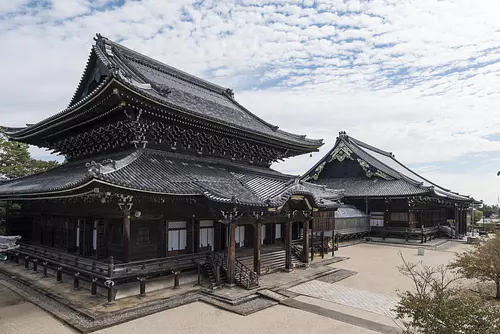
高田本山専修寺
中南勢
津市新型コロナウイルス感染症の拡大に伴う行事等の変更について 高田本山という愛称で親しまれる当山は、親鸞聖人(しんらんしょうにん)の開かれた真宗の本山がおかれています。 2017年に国宝指定を受けた、国宝木造建造物で5番目の大きさを誇る御影堂と、本堂で彫刻が素晴らしい如来堂の他、東京ドーム2個分の境内に11棟の国指定重要文化財が建ち並びます。その他の国宝・重文などは宝物館にあります。 また、夏には多数の蓮の花が咲き誇ります。 歴史の授業でもご存じのように親鸞聖人は念仏弾圧のときに越後に流されました。その後の足跡をたどれば、関東を廻って京都にお帰りになっています。その関東での拠点ともいえるのが、今の栃木県真岡市高田にある本寺専修寺です。その後、本山が三重県津市一身田町に移転。今の高田本山の元になりました。 この真宗高田派本山専修寺(しんしゅうたかだはほんざんせんじゅじ)は一身田(いしんでん)の地に寺内町を形成すると共に親鸞聖人のひろめられたお念仏を今に伝えています。 創建年代:1465年

.png)
